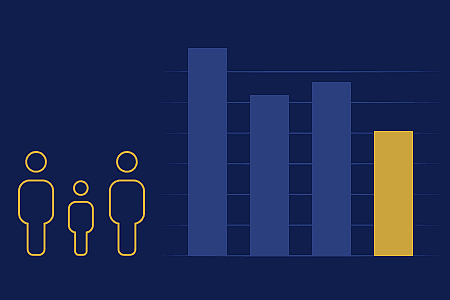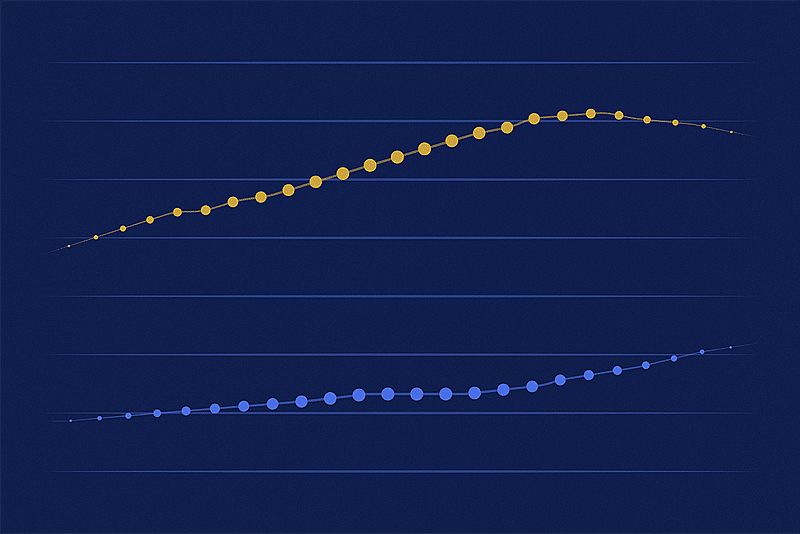The United Nations announced that the world has reached a key milestone – global population has surpassed 8 billion people. A quick Google search will return endless media reports and commentary. Headlines suggest a continuum of the narrative we have all come to believe – the world is growing out of control without bounds, and our precious resources are threatened with extinction. However, is the population actually declining and why is population decline a problem?
Is that narrative accurate?
Have you noticed lately that no matter where you look, there doesn’t seem to be enough workers around? A friend was lamenting to me the other day about a recent trip he took with his son – a winding exploration of the natural features and activities associated with the mountainous areas of New York, Vermont, and New Hampshire. Whether it was a top-notch resort in Lake George, New York or just a diner in the Lake Winnipesaukee area of New Hampshire, the service he received was much less than he was expecting. In some instances, the simple exercise of stopping for lunch had to be reconsidered due to shortened hours or outright closures. “What’s going on?”, he asked.
The impact of COVID
COVID certainly caught all of us by surprise, and many point to lockdowns, general business disruptions, and expanded government assistance as reasons for today’s seemingly endless labor shortages. The truth is, though, we are facing a smaller population of workers, and we’re beginning to feel it. The pandemic has acted as a tipping point – exposing the underlying demographic vulnerabilities facing us today.
Heavily relied upon models have not accurately predicted the number of children born in recent decades. Declines in fertility rates started in the early 1970’s and have largely gone unnoticed. The result is a misguided interpretation of the number of younger people in our society.
Those familiar with US labor statistics will suggest that COVID displaced over 4 million workers from the labor force. Among those 4 million are the many parents and caregivers that had no other choice but to leave their jobs and look after their loved ones. Instead of working, they had to become teachers to their children and nurses to their aging parents. Many service-oriented employees working in areas of hospitality, leisure, and tourism were forced to leave their jobs as a result of broad industry closures.
The 55+ working population
Many others, though, in fact, over half, were over the age of 55 (and many over 65). Much of this group has not re-entered the labor market. Employers in sectors that were hit particularly hard by the pandemic offered early retirement packages and other incentives to help right-size their business operations. Strong stock market performances fueled by government stimulus initiatives increased retirement savings levels and added the necessary confidence to make the decision not to work. Workplace safety concerns and uncertainty also led to hesitation and an unwillingness to accept any additional risk.
So what – right? Early retirements happen, and workplace safety concerns are well-founded. As it turns out, workers over the age of 55 have become incredibly important to our country’s economic function. Older workers tend to be more educated and have far more experience as compared to younger workers. That’s not the reason that I’m referring to, though. It comes down to simple numbers – how many people we have available to work and their age.
US labor force by age group

According to the US Bureau of Labor Statistics, in 2000 there were 101,338,000 people aged 25 to 54 and 18,345,000 people over the age of 55 in the labor force – a ratio of 5.5 to 1. As of October 2022, there are 105,198,000 people aged 25 to 54 and 38,688,000 people over the age of 55 in the labor force – a ratio of 2.7 to 1. We now have almost half the ratio of 25 to 54 year olds in our labor force when compared to workers over 55.
An increasing amount of older people in our society is certainly not a new observation. In fact, challenges associated with aging baby boomers have been well documented and written about. It’s important to note, though, that the number of 25-54 year olds in our labor force has not grown to the same degree as those over 55.

So, if we need more workers, where do we find them?
Let’s consider those that are NOT currently in the labor force. According to the same BLS numbers, there are 60,626,000 people over 55 not in our labor force. That’s an additional 3.3 million people when compared to the pre-pandemic level of 57,290,000. Recent stock market declines have eroded the values of retirement accounts and many economists are predicting recession, so we may see some of these workers come back to work. It’s not happening yet, though.
There are 671,000 more people aged 25 to 54 not in the labor force today when compared to pre-pandemic levels. And although there is almost 22 million of them today, this is not an unusual level when considering recent history. We have roughly the same number of 25 to 54 year olds not in the labor force today as we did 20 years ago in mid-2002. Yet in 2002, there were fewer than 40 million over 55 not in the labor force as compared to 60 million today – a 50% increase.
Take a look around you today. Make note of who is over 55. Your co-workers…your doctor…the educator of your children…your customers. How important are they to you? How important are they to your business? Will it impact you if they go away?
Are you prepared for the future?
We can’t simply snap our fingers and make a 30-year-old appear. Are you ready to do more with less? Is population decline a problem for your business? Is your business adequately prepared? Don’t let these trends lead you. Understand what’s going on around you and make the necessary changes now. Solutions are available, and with proper planning, these structural changes to our society can be opportunistic. If caught off guard, though, major problems can happen. Some businesses will fail, and new ones will emerge. Which side do you want to be on?




